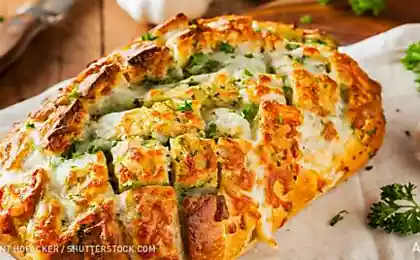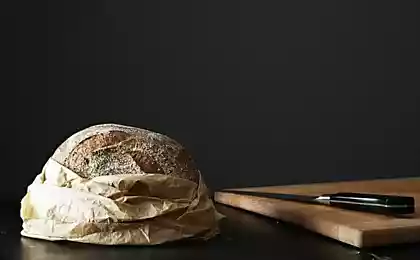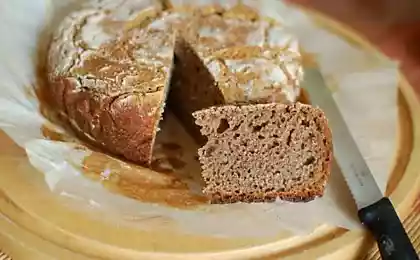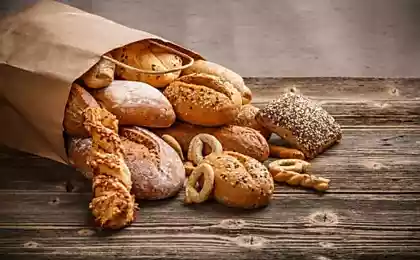191
Grandma always says that the Union was the most delicious bread, natural and without chemistry.
Natasha came on vacation to her parents from Poland, where she lives with her family and has been working for more than a year. Friends threw a party for her. At dinner, Natasha admitted that she would bring our bread with her. A 14-year-old daughter of one of her friends, Alina, joined the conversation of her friends: And my grandmother says that the most tasty and fluffy bread pulp was during the Union, because it is natural, without chemistry. And he keeps saying, “There is no more such bread and there will be no more.”

Come on, Alina, she just can’t part with the past, because then she was much younger, healthier, less care, the prices of all goods and services are cheaper. That's what many of her generation say. Think, do people live to eat, or eat to live? - And Grandma Galina herself how many times she remembered how she stood in queues for hours to buy banal products, keep silent about clothes and equipment. Like hand-washing... Come on, Al, Grandma's bread pulp won't ruin our mood. The best time is when we live.

The conversation returned to Natasha stories and questions. But I remember very well how hard bread was between 1963 and 1964. It was produced with the addition of corn and peas, because wheat was collected at the level of 1940. The population doubled and the grain harvest did not grow. We were given small wheat buns at school, but we didn’t eat them at recess – we brought them home to share with our family. And the buns were delicious, especially compared to the store bread.
The quality of bakery products has improved rapidly due to the import of wheat from the United States, Canada, and Argentina. Later, when steel-free technologies of sowing grains began to be used and the transition to growing persistent short varieties of wheat began, yields increased. But in the 80s of the last century and before the collapse of the Union, despite the Food Program, there were many problems with food, many of them became scarce. Quality often left much to be desired.
It would seem that bread was baked according to the standard from flour, water, yeast with the addition of salt and sugar. How can you ruin it? But it worked. I even remember that in the same city some varieties of bread were better and others worse. Yes, in the city - in one rural bakery, the white "brick" for years was indescribably tasty, and from black and gray flesh I wanted to sculpt horses like plasticine.
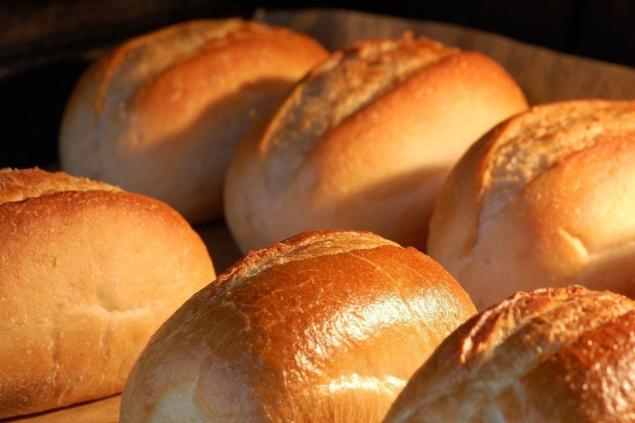
So we brought from the city relatives bread of dark varieties. Rather, it is not the Union that matters, but the notorious human factor, ridiculous logistics and the fact that many nurture familiar myths in their minds and feelings.
By the way, with bread, in addition to nostalgic motifs about its unprecedented taste, there are still some myths. Shall we try to dispel them?
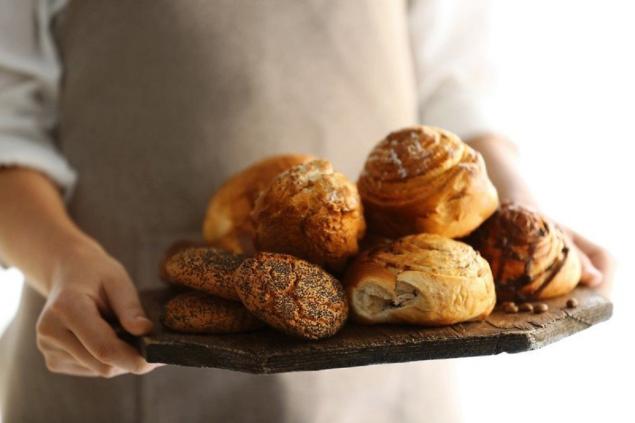
Bread and mythology
Yeast in bread can cause tumors, thrush and other misfortunes. It's a myth. There is no research to support this warning. Bakery yeast of the species Saccharomyces cerevisiae cannot be the cause of diseases, since they do not survive at high temperatures during the baking process. Yeast can be caused by Candida albicans. But they don't put them in bread. Gluten is bad. Indeed, gluten is harmful. But only for those who have celiac disease or intolerance to cereal proteins. In the absence of these problems, being afraid of gluten is like living in fear, like falling from an apple tree and being hit by an overripe coconut.
Bread pulp should spring when pressed, be lush. For white bread, yes. But whole grain wheat, rye, buckwheat will not work. It's dense, hard.
By the way, if the pulp sticks to the teeth or to the knife, then the quality has improved. When nostalgia for bread from childhood or no confidence in its quality, you can successfully bake homemade bread. And not only in the oven, but also in the oven, even in the pan. Alinina's grandmother could try...
Photo preview

Come on, Alina, she just can’t part with the past, because then she was much younger, healthier, less care, the prices of all goods and services are cheaper. That's what many of her generation say. Think, do people live to eat, or eat to live? - And Grandma Galina herself how many times she remembered how she stood in queues for hours to buy banal products, keep silent about clothes and equipment. Like hand-washing... Come on, Al, Grandma's bread pulp won't ruin our mood. The best time is when we live.

The conversation returned to Natasha stories and questions. But I remember very well how hard bread was between 1963 and 1964. It was produced with the addition of corn and peas, because wheat was collected at the level of 1940. The population doubled and the grain harvest did not grow. We were given small wheat buns at school, but we didn’t eat them at recess – we brought them home to share with our family. And the buns were delicious, especially compared to the store bread.
The quality of bakery products has improved rapidly due to the import of wheat from the United States, Canada, and Argentina. Later, when steel-free technologies of sowing grains began to be used and the transition to growing persistent short varieties of wheat began, yields increased. But in the 80s of the last century and before the collapse of the Union, despite the Food Program, there were many problems with food, many of them became scarce. Quality often left much to be desired.
It would seem that bread was baked according to the standard from flour, water, yeast with the addition of salt and sugar. How can you ruin it? But it worked. I even remember that in the same city some varieties of bread were better and others worse. Yes, in the city - in one rural bakery, the white "brick" for years was indescribably tasty, and from black and gray flesh I wanted to sculpt horses like plasticine.

So we brought from the city relatives bread of dark varieties. Rather, it is not the Union that matters, but the notorious human factor, ridiculous logistics and the fact that many nurture familiar myths in their minds and feelings.
By the way, with bread, in addition to nostalgic motifs about its unprecedented taste, there are still some myths. Shall we try to dispel them?

Bread and mythology
- Bread is bad because it makes you fat. Nutritionists and nutritionists say this is a myth. Bread is carbohydrates, like cereals and vegetables with fruit. According to the model scheme of balanced nutrition, carbohydrates should make up from 45 to 60% of the daily diet. And we get fat not from carbohydrates, but from excess calories. So everyone risks gaining weight without controlling the amount of calories consumed with food, whether in bread, or in apricots and nuts. If you eat two pieces of good bread a day, you don’t have to worry about getting better. Information for memorization: 100 grams of bread 220-270 calories. Good whole-grain bread. On the package with it you will read that the composition includes whole grain flour, millstone, stripping or 2 varieties. Take him boldly.

Yeast in bread can cause tumors, thrush and other misfortunes. It's a myth. There is no research to support this warning. Bakery yeast of the species Saccharomyces cerevisiae cannot be the cause of diseases, since they do not survive at high temperatures during the baking process. Yeast can be caused by Candida albicans. But they don't put them in bread. Gluten is bad. Indeed, gluten is harmful. But only for those who have celiac disease or intolerance to cereal proteins. In the absence of these problems, being afraid of gluten is like living in fear, like falling from an apple tree and being hit by an overripe coconut.

Bread pulp should spring when pressed, be lush. For white bread, yes. But whole grain wheat, rye, buckwheat will not work. It's dense, hard.
By the way, if the pulp sticks to the teeth or to the knife, then the quality has improved. When nostalgia for bread from childhood or no confidence in its quality, you can successfully bake homemade bread. And not only in the oven, but also in the oven, even in the pan. Alinina's grandmother could try...
Photo preview
Lying in bed in the morning, pulling this muscle, you will feel how youth and beauty return to you.
Why actress Verico Anjaparidze became a legend during her lifetime and how her memory is kept in Georgia






